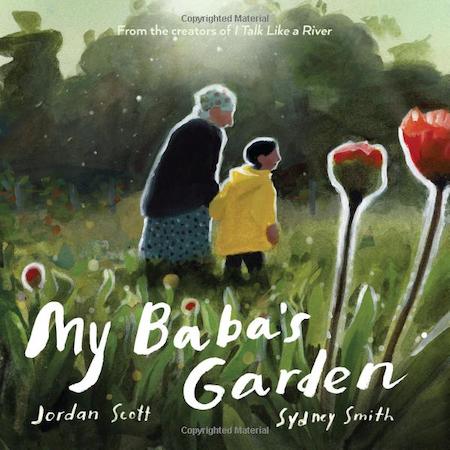
Holodomor. A Ukrainian word derived from one that means to kill by starvation. Known as the Terror–Famine or the Great Famine, it was a man-made famine in Soviet Ukraine from 1932 to 1933 during which millions of Ukrainians died. It also affected other major grain-producing areas of the Soviet Union.
Stalin forced peasant farmers to transfer all of their land and livestock to state-owned farms. Many peasants who refused to give their property and livestock over to the government were shot or sent to forced labor camps in Siberia.
The remaining peasants were forced to work as laborers on those farms. Instead of being paid money for their work, they received food — food that was rationed out — with rations getting smaller and smaller as time went by. Many people hid food in their homes and barns so the military police wouldn’t confiscate it. They also buried some in nearby forests.
Now that I’ve shared an extremely brief and simple explanation of that famine, let’s take a look at the book My Baba’s Garden written by Jordan Scott and illustrated by Sydney Smith.
Jordon Scott based this book on his own grandmother and his experiences with her. His grandmother lived in Poland — and not Ukraine — but probably experienced similar food shortages and hardships as Ukrainians did during Holodomor.
Like Baba (the grandmother in the book), his grandmother lived in a renovated chicken coop behind a sulfur mill.
Like Baba, his grandmother didn’t speak English very well. Instead, they communicated through gestures, laughter, hugs, and eating together.
Like Baba, his grandmother would pick up food that Scott dropped, kiss it, and give it back to Scott.
Like Baba, his grandmother stored food in odd nooks and crannies around her home. (Doesn’t that sound similar to what the starving Ukrainians did?)
Here is the boy in the story with his Baba at her home by the mill.
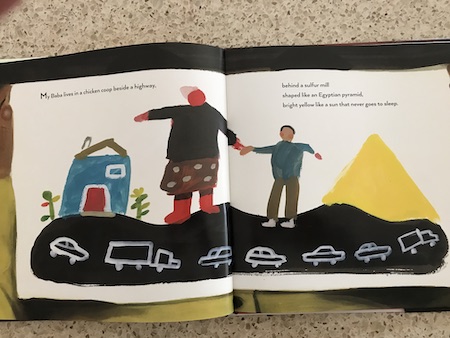
Every day, the boy’s father took him to his Baba’s home. He would find her cooking in the kitchen. After eating breakfast, Baba walked the boy to school.
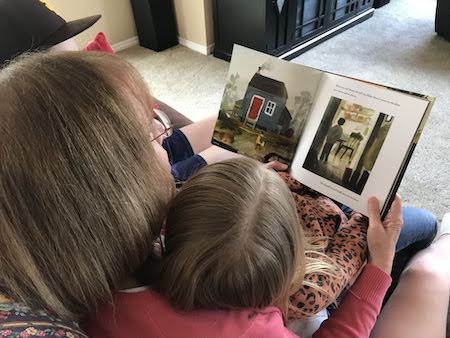
When it rained, Baba walked slow so she could look for worms. When she found some, she put them in a small jar in her pocket. She put the worms in her garden.

One day, Baba moved in with the boy and his family and stayed in the bedroom right next to the boy’s bedroom. She was now bedridden.
Every morning the boy took breakfast to her in bed.
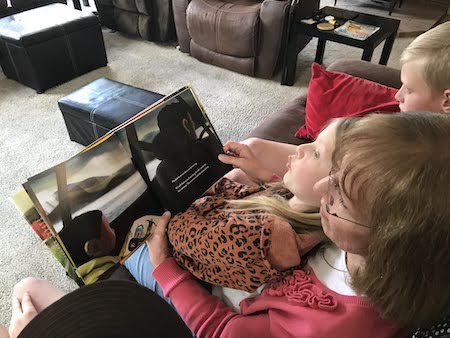
The boy planted cherry tomatoes in a pot that he put just outside her window. (Why is one of my grandsons smiling like that in the picture? I’m not sure. Still, he’s a cutie.)
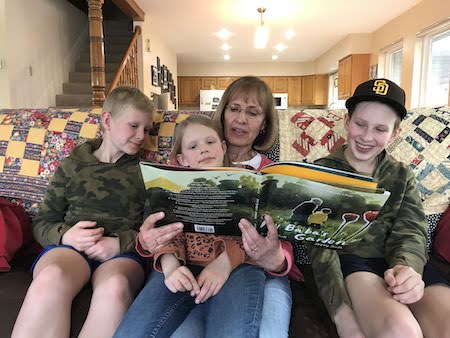
When it rained, the boy would run out to look for worms.
(I noticed that at the beginning of the book, the faces of the little boy and the grandmother didn’t have any details. As the story progresses, more details appear until you get this awesome picture of the grandmother’s face. I love it! She looks so gentle, sweet, loving, kind. A face full of love for her grandson.)
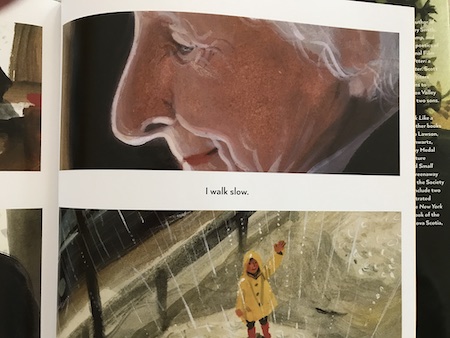
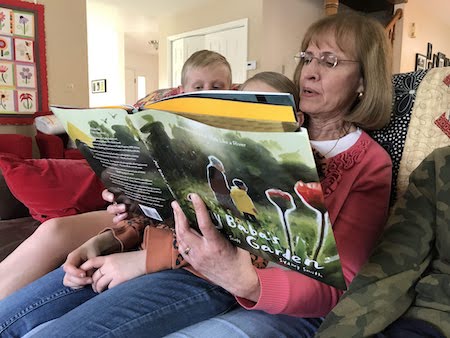
I really like this book. I love the impressionistic illustrations. Like impressionist artists, Sydney Smith captures moments in the everyday life of a boy and his grandmother. He uses broad brush strokes of color focusing on overall visual effects instead of details. (That’s probably why there aren’t facial details at the beginning of the book.) And he does a masterful job!
Of course I love the book because it is about a grandchild and a grandmother spending time together. Even though they don’t speak the same language, they share love and have good times together. (As you know, Dear Reader, I’m all about strong relationships between generations.)
I like it because the author doesn’t use trite phrases to describes things. They are novel — mountains are like whale bellies, Baba humming like a night full of bugs, the boy eating his breakfast from a swimming-pool bowl.
I like it because it’s a sweet book to read to young children yet it provides a great opportunity to have good discussions with older ones. Talk about things like why the grandmother lived in a chicken coop, why did she keep food in places other than the kitchen, why would the grandmother feed the boy pickles, cabbage, and beets (YUCK!) in addition to oatmeal for breakfast, how does the grandmother feel about leaving her home, how does the boy feel about her moving into his home. (You could even talk about Holodomor if your grandkids are old enough.)
I highly recommend My Baba’s Garden! You’ll love it and so will your grandkids.
You can get a copy on Amazon for $17.94.




